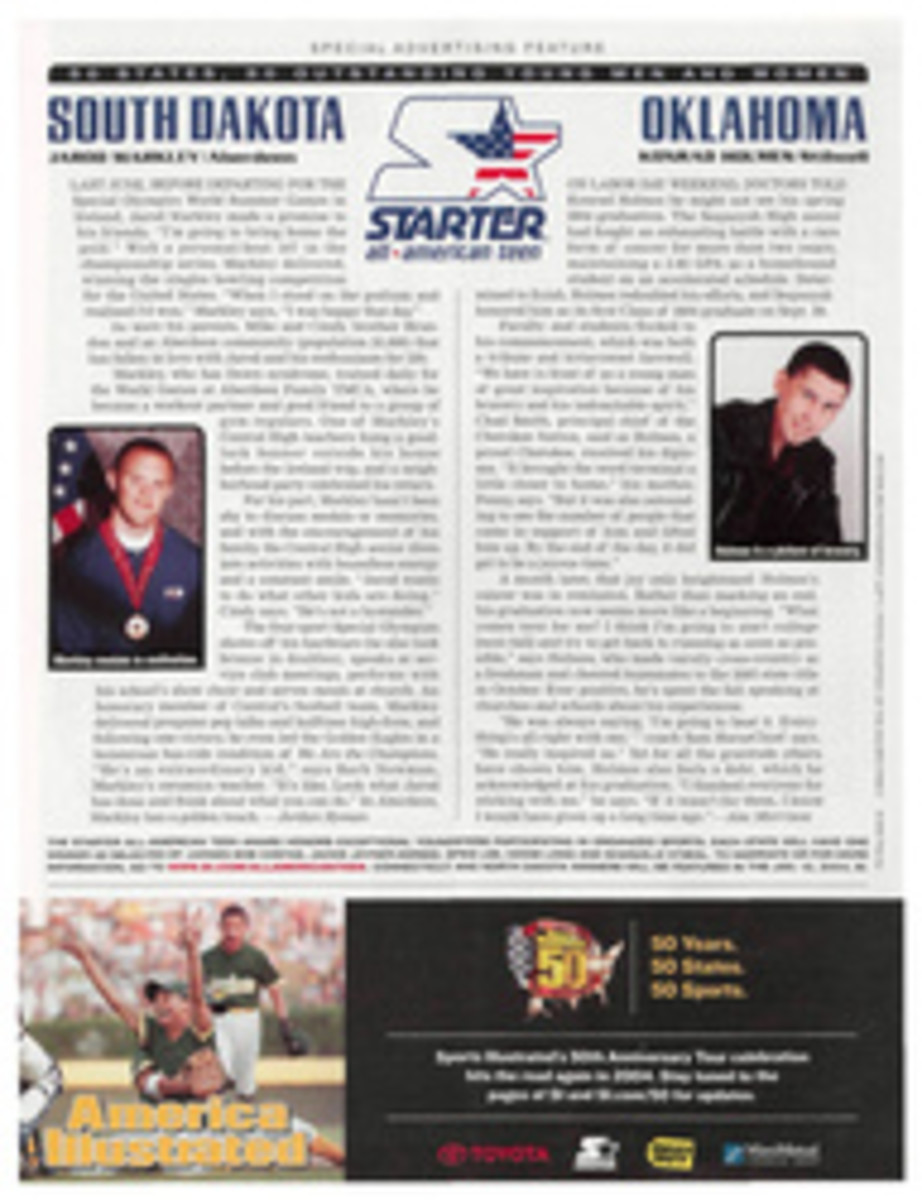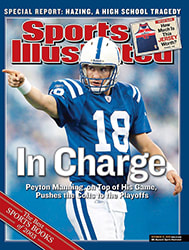
Small Wonder Little-school feats are the big moments for natives such as NBC's anchorman
If you're into sports trivia, you may know that Mike Miller of the
Memphis Grizzlies grew up in Mitchell, S.Dak., and played high
school basketball in the Corn Palace, which was also the home
court of Dick Green, the peerless second baseman for the 1972-74
world champion Oakland A's, and Ordell Braase, an All-Pro lineman
for the Baltimore Colts in the Johnny Unitas era. Lyle Alzado of
the Oakland Raiders went to college in Yankton, birthplace of
Adam Vinatieri, the New England Patriots' placekicker whose field
goal won the Super Bowl in 2002. Billy Mills, who stunned the
Olympic world by winning the 1964 10,000-meter race in Tokyo, was
raised on the Pine Ridge reservation. Other South Dakotans who
reached the big time include the Byrum brothers, Curt and Tom,
on the PGA Tour, and Casey Tibbs, the world champion bronc
rider from the '50s who made it to the cover of LIFE magazine.
Even though I've been gone from my home state for more than 40
years, I continue to keep that roster of All-Stars in my mind,
but like most South Dakotans, I have another set of hall of fame
memories that are in many ways more enduring and more important.
The history of South Dakota sports is written on the high school
playing fields and in the tiny gyms of the towns that dot the
windswept Great Plains. The achievements or failures of high
school teams represent what the native Sioux used to call the
Winter Count, the big events represented by symbols painted onto
a tanned buffalo hide.
If you pass through my birthplace, Webster, and ask about life
there after World War II, they'll probably begin with their high
school's three straight Class B basketball titles from 1946 to
'48. If you go to Onida, home of the Byrum brothers, someone will
surely point out that their second cousin Jim Sutton led the
local high school to the 1953 Class B basketball title.
I saw that game and the one two years later in which defending
champion Hayti lost in overtime to White River, a thriller that
still has a place in my memories even after a lifetime of
watching World Series games, NBA Finals and Olympics. In those
days there were only two classes for high school sports, A and B,
and only boys could play. There were just a handful of schools
large enough to qualify for A, but there were a couple hundred B
schools, most with fewer than 100 students. Getting to the top of
the heap in any of the three high school sports--basketball,
football and track--was often a once-in-a-lifetime event. It
wasn't unusual for an entire town to close for three days if the
high school team made it to the state B basketball championship.
In the very small schools scattered across the prairie, football
was a six-man game on an 80-yard field, with 15 yards for a first
down and 125-pound freshman defenders trying to pull down
180-pound senior running backs. Few towns could afford lights, so
the games were played on Friday afternoons.
There's a benefit to growing up in a state of limited population.
Almost everyone gets to suit up, however modest his abilities. I
have varsity letters in three sports, and yet no one in Yankton,
where I attended high school, is likely to cite my athletic
prowess as part of a commentary on my formative years.
That's not to say that people have forgotten my playing days
entirely. I was the reserve quarterback on two Eastern South
Dakota Conference champion football teams, but what they remember
is that I was a starting guard on a basketball team that was
upset by a much smaller high school en route to the state
tournament in 1958. That was 45 years ago, and it may seem as if
enough time has passed to make the locals forget. But, no, they
won't, and neither will I.
Recently I moderated on national television a debate among the
Democratic candidates for president. One of my teammates from
that ignominious loss was present. We chatted after the debate,
and I wish I could tell you that we spoke about the great issues
of the day. We did not. Instead, we talked about the lingering
frustration of that long-ago loss in a high school basketball
game. In South Dakota, high school sports memories are forever,
for better or worse.
Born and raised in South Dakota, Tom Brokaw has been the anchor
and managing editor of NBC Nightly News since 1983.
COLOR ILLUSTRATION: ILLUSTRATION BY JOE CIARDIELLO

